Last week, I reviewed the long-awaited catalogue on the textiles of the Halberstadt Cathedral Treasury. Another Cathedral Treasury with many embroidered vestments from the late medieval period is now divided between Germany and Poland. As in Halberstadt, the textiles of Gdańsk’s St Mary’s Church had survived in the Cathedral Treasury up to the Second World War. Prof. Dr Mannowsky published the last part of the five-part catalogue in 1938. At that point, 541 pieces were still present (there are precisely 400 in Halberstadt). But this wasn’t going to last.
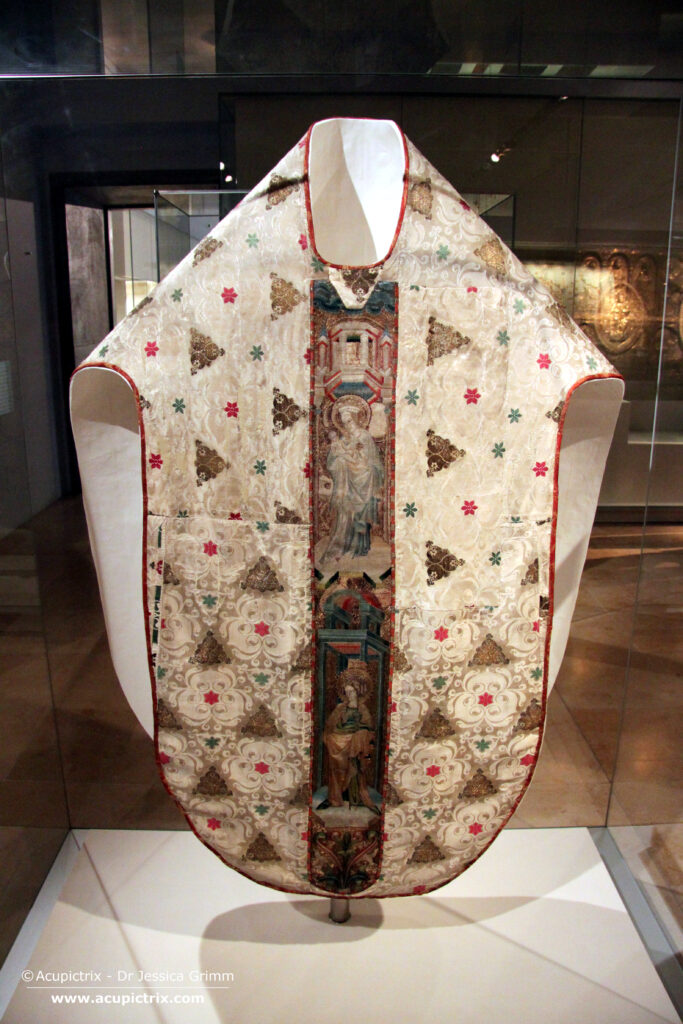
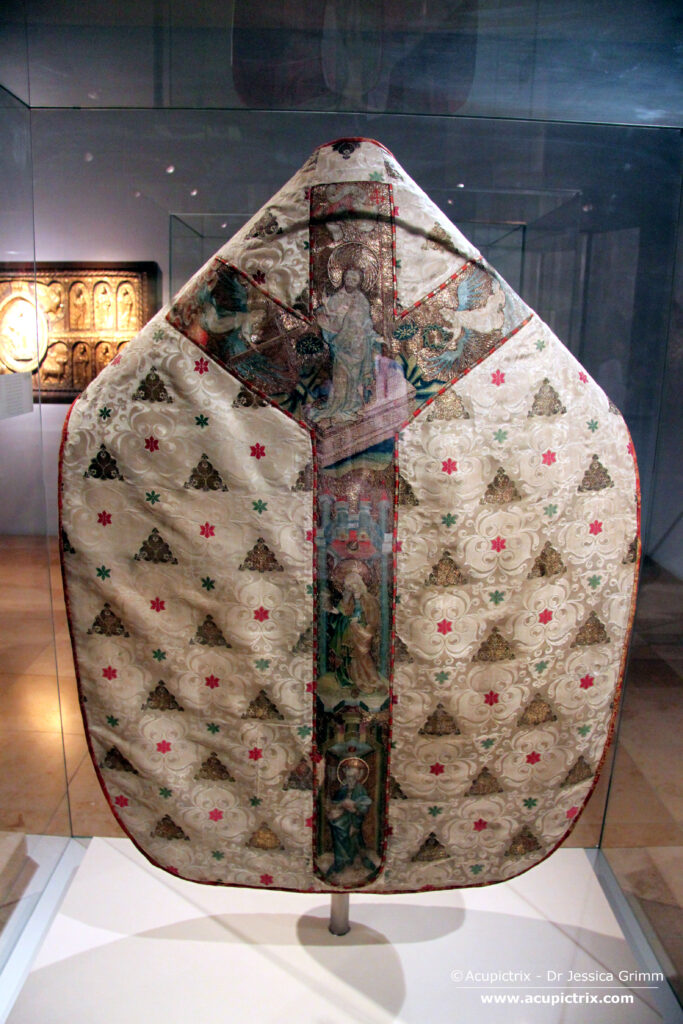
As the war worsened, the priest handed out individual pieces to members of his congregation who fled West. Another part was packaged up for transport and safekeeping in a mine in Bavaria. Long story short, the individual pieces eventually made their way to the St Annen Museum in Lübeck, whilst the transport, which had got stuck in Thuringia, was confiscated and handed over to Poland. These 183 pieces are now in the National Museum Gdańsk. A few pieces are also kept in the Germanisches Nationalmuseum in Nuremberg. In 2022, the owner of the textiles, the Union of Evangelical Churches in Germany, decided to return them to Poland at an appropriate time. This decision led to much debate.
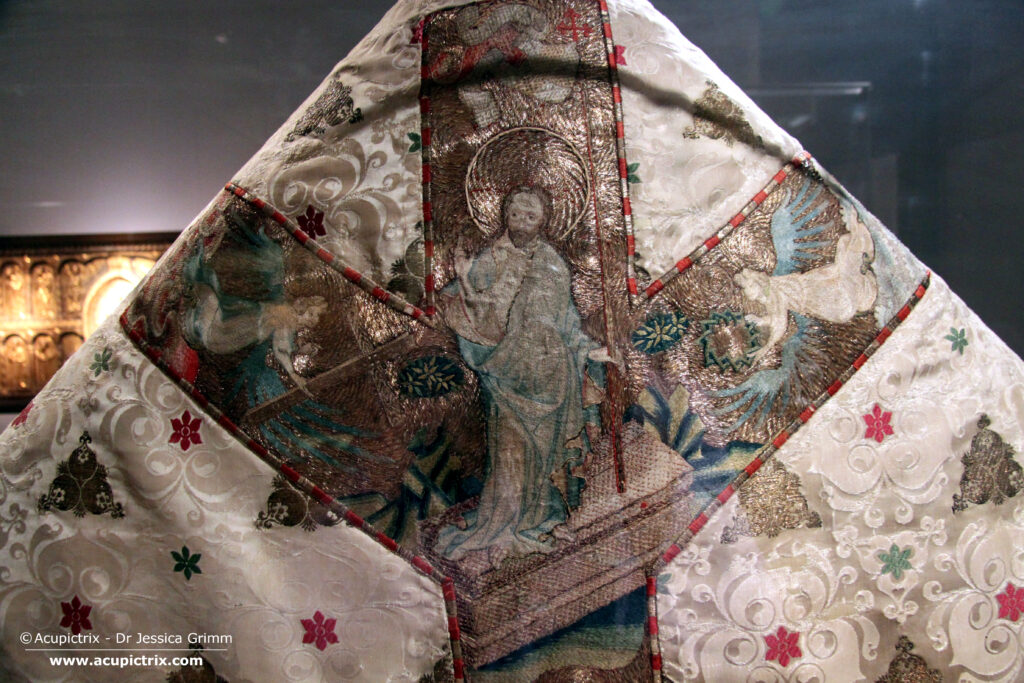
This stunning white chasuble is one of the embroidered vestments on permanent display at the Germanisches Nationalmuseum in Nuremberg. The exquisite Bohemian embroidery was likely made in Prague around AD 1420. The chasuble was intended for use at the high altar of St Mary’s Church. The complete set of embroidered vestments also included a cope with Bohemian embroidery (Nationalmuseum Gdańsk) and two dalmatics without embroidery (Nationalmuseum Gdańsk).
The front of the chasuble shows an orphrey column with Mary holding Jesus, followed by St John with his chalice and a stylised flower ornament below. The chasuble cross on the back features the Resurrection, followed by Saint Barbara with her tower and Saint Peter with his key.
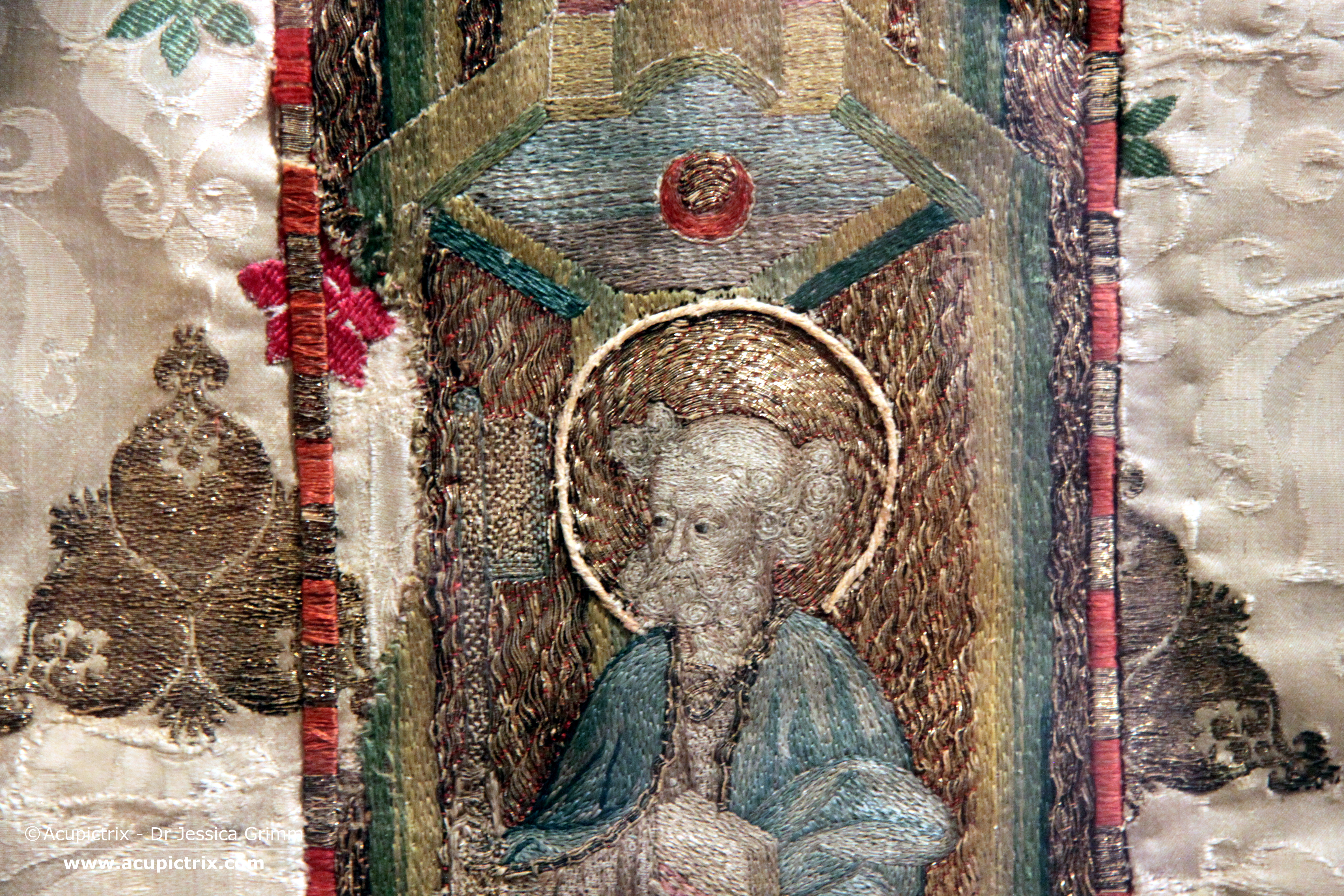
The Bohemian embroidery on this is extraordinarily fine. The silk embroidery consists of finely shaded directional split stitch executed on fine linen. This technique can also be observed in Opus anglicanum pieces that were made about a century earlier. The majority of the golden background consists of sunny spirals couched down with red silk. However, there are chevrons behind Saint John, and slanted lines behind Saints Barbara and Peter. Likely, the bare white string of the halos of the chasuble cross was once covered with freshwater pearls. The edge of the orphreys consists of strips of parchment covered with red patches of red silk alternating with patches of gold thread. Mary’s crown also has a padding of parchment strips.
There’s some confusion about the type of gold thread used on these embroidered vestments. Whilst Borkopp-Restle praises the high quality of the thread, she still identifies it as membrane gold wrapped around a linen core. On the contrary, Mannowsky and Wetter identify the threads as silver-gilt foil wrapped around natural silk. The online museum catalogue follows them, and so do I.
And then there’s mention of or nué by both Borkopp-Restle and Wetter. Wetter specifies this to the embroidery seen on Saint Peter’s key. To me, this is not or nué. This is just normal brick couching in two (three?) different solid colours. The characteristic shading and irregular spacing of the couching stitches are missing, and this is thus not or nué.
Literatur
Borkopp-Restle, B., 2019. Der Schatz der Marienkirche zu Danzig: Liturgische Gewänder und textile Objekte aus dem späten Mittelalter. Berner Forschungen zur Geschichte der textilen Künste Band 1. Didymos, Affalterbach.
Mannowsky, W., 1931-1938. Der Danziger Paramentenschatz. Kirchliche Gewänder und Stickereien aus der Danziger Marienkirche. Berlin – Leipzig.
Wetter, E., 2001. Böhmische Bildstickerei um 1400. Die Stiftungen in Trient, Brandenburg und Danzig. Gebr. Mann Verlag, Berlin.
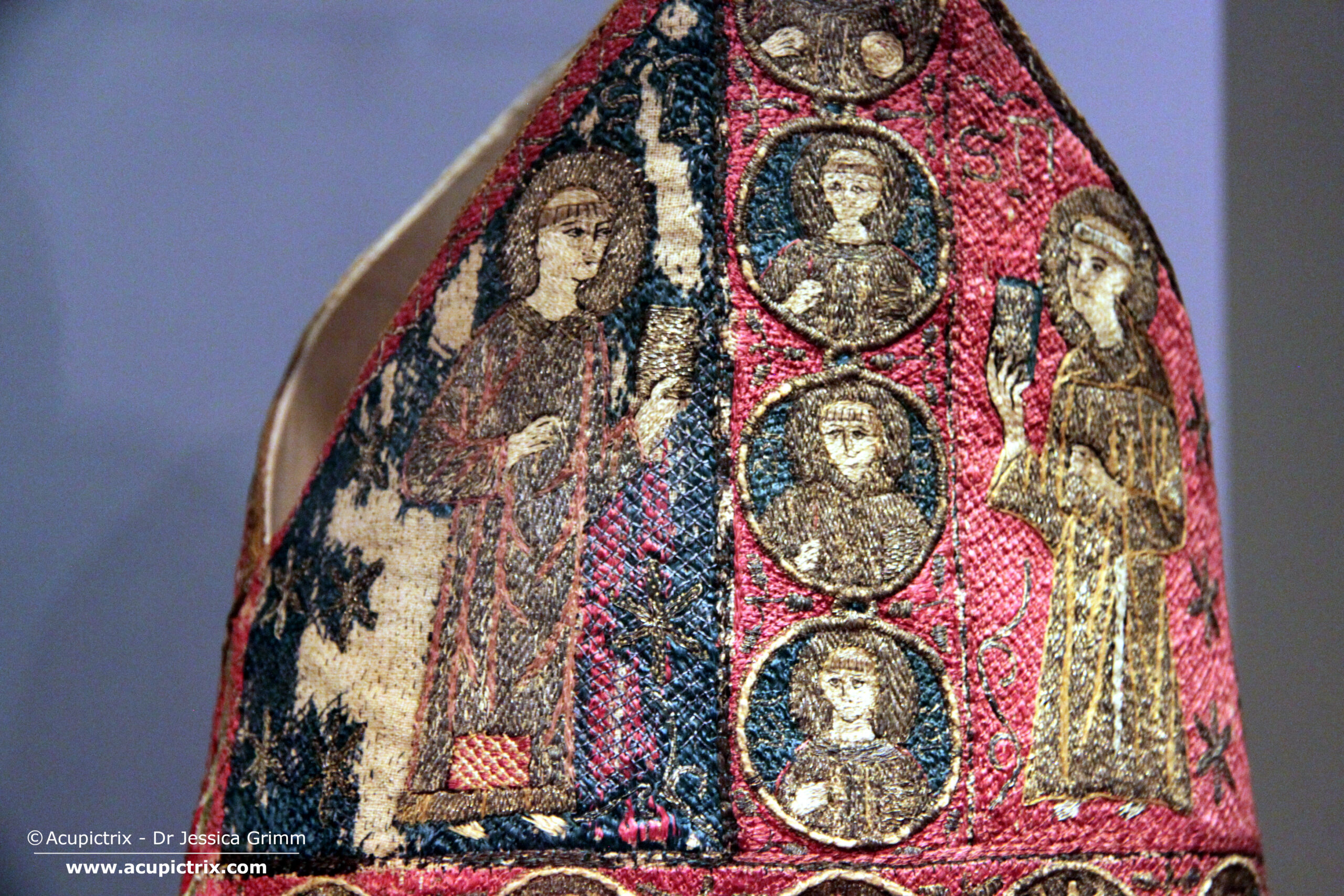
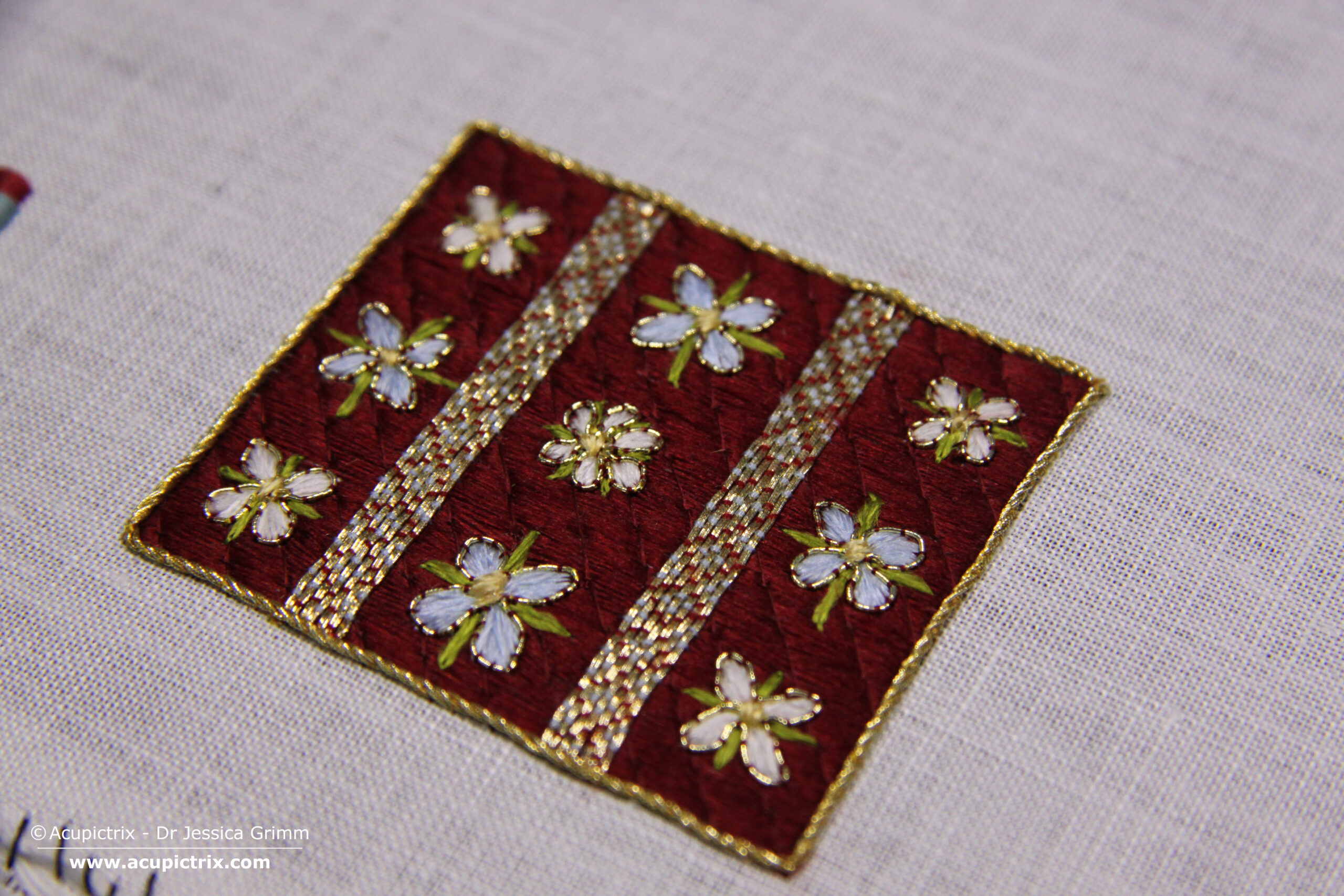
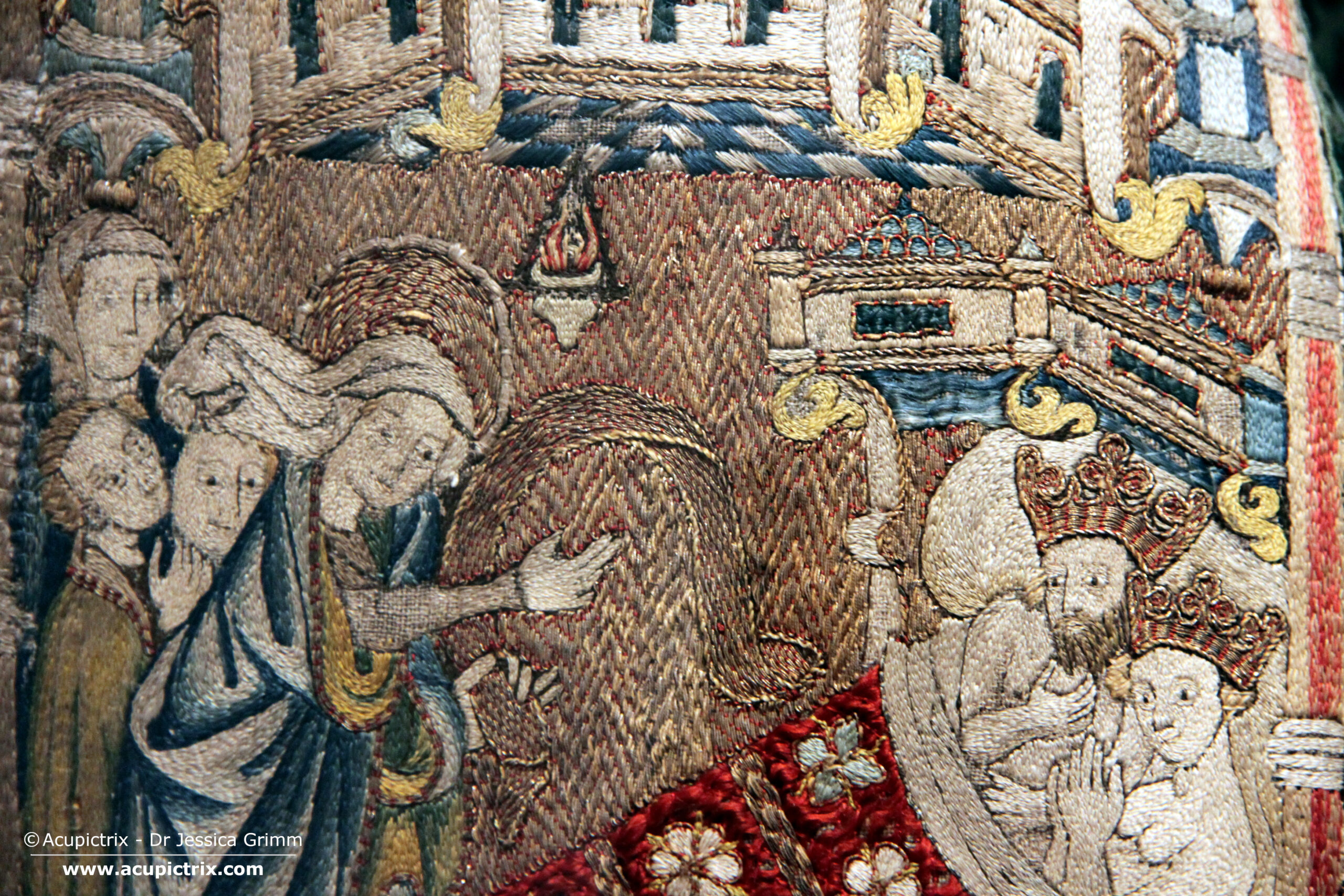
0 Comments